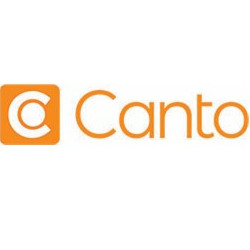Today's workplace is increasingly defined by hybrid environments that allow organizations to draw upon talent far beyond their local market.
Employees are often incorporated into distributed teams that include members from many different physical locations. In many cases, teams cross state and national boundaries to create a truly diverse workforce dedicated to a common business goal.
Distributed teams are made possible by innovations in technology that allow team members to share resources and collaborate without having to be in the same physical location.
Although many collaboration tools are available, matching the right software to the group's needs can mean the difference between long-term productivity and disruptive frustration.
Unique Challenges of Distributed Teams and Hybrid Workforces
Whether distributed team members are part of a hybrid workforce or completely virtual, they face unique challenges in working collaboratively compared with in-person teams.
Communication, for instance, needs to be much more thorough and deliberate. Instructions and expectations cannot be left vague because it might not be possible to get more detail quickly—especially if team members are separated by time zones.
Although hybrid and virtual teams often have many communications channels available (such as email, messaging applications, or task management software), everyone may not use them the same way, making it easy to miss important details.
As a consequence of communication challenges, many remote employees end up working in isolation rather than collaborating with fellow team members. Although that may seem like a good solution from an individual standpoint, it prevents teams from reaching their full potential because a lot of work ends up being done (or redone) more than once.
Even if redundancies are kept to a minimum, the final deliverable often seems like it was cobbled together from disparate sources rather than completed as a singular, coherent project.
Four Common Productivity Challenges With Collaboration Tools
Although distributed teams allow organizations to make use of talent from around the world, bringing those people together in a productive virtual environment can be difficult without the right software tools in place. Those tools should help teams overcome the common problems associated with hybrid and remote work.
Unfortunately, organizations sometimes try to get by using applications for tasks and processes that the apps are not really designed to handle. That ends up leading to wasted time and frustration as employees continually try to force a square peg into a round hole.
Here are four challenges that are often made worse by having the wrong collaboration tools in place.
1. Confusion
Productivity and efficiency are heavily dependent on employees' knowing what to do and how to access the resources they need to carry out their responsibilities. When software tools make it difficult to locate those resources, people end up spending valuable time searching for what they need rather than doing productive work.
Anyone who has spent hours—or even longer—sifting through various Google Drive or SharePoint folders in search of a digital asset knows just how much of an impact confusion can have on efficient collaboration.
2. Workflow Disruption
Good collaboration tools make it easy for employees to manage tasks within a single workflow, which reduces the amount of time spent shifting resources between applications.
As more people become involved in a task, preserving a streamlined workflow becomes even more important. When team members have to constantly move assets between applications and pull them from various storage locations, there's a greater chance of something going wrong, whether it's a file that's misplaced or a key task that's overlooked and not completed.
In addition to creating more confusion, workflow disruption makes it difficult to maintain a single source of truth for assets.
3. Version Control
One of the greatest challenges with collaboration has always been version control. When multiple people are working on a single project, it's vital that everyone know which version of an asset is the most up to date.
Although Cloud applications have made that somewhat easier by mostly eliminating local file storage, they can actually make the problem worse if it's hard to manage or work with assets within the platform. That encourages people to create their own workarounds and processes, such as making copies of files and sharing them over separate platforms.
4. Security
In addition to undermining productivity, poor collaboration tools create a host of security risks.
When software tools make it difficult to complete routine tasks, most people respond by developing their own system of doing things. Unfortunately, removing assets and work processes from an application exposes both the latter and the former to an open and potentially compromised environment.
If someone were to download a copy of an asset to a device that's been infected with malware, that file could easily serve as a vector for a costly security breach the moment it's uploaded again or sent to another team member.
Strengthening Productivity With DAM Software
Distributed teams that work heavily with digital media assets, such as high-resolution images, audio files, and video, can avoid productivity challenges by implementing a digital asset management (DAM) solution that's designed for their specific workflow and collaboration needs.
Unlike most asset management systems, DAM software was created with visual assets in mind so that collaborative teams can locate and access the resources they need quickly and integrate them seamlessly into a workflow.
Canto's DAM solution, for example, allows organizations to set up dedicated portals for sharing assets among distributed teams and various stakeholders. Organization features make it easy to search for content, and extensive integrations eliminate the cumbersome process of transferring files from one application to another. Because assets remain stored in the Canto platform, it's much easier to maintain strict version control and keep sensitive data secure.
To learn more about how Canto's innovative DAM solution can help your hybrid workforce enhance its productivity and spend more time creating innovative content that builds your brand, sign up today for a free trial.




